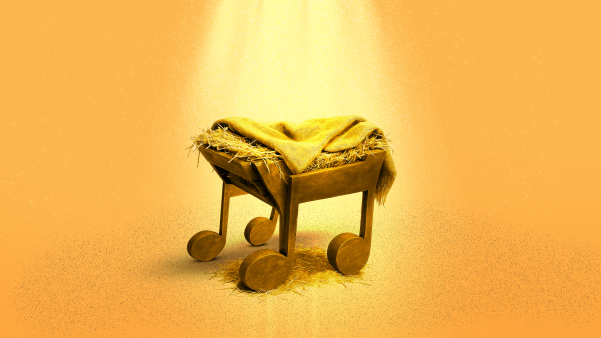Joan of Arc is one of the most famous women in the history of Christendom. Her heroism was celebrated during her lifetime, and her ongoing popularity compelled the church, which had condemned her as a heretic in 1431, to take a second look at her trial and rescind its verdict only 25 years later. Joan the woman quickly became Joan the icon, a beloved subject of paintings and sculptures and, beginning in 1899, films.
In 1920, the church that had once condemned her now declared her a saint. During World War II, both sides used images of Joan in their propaganda. The Nazi collaborators compared the Allied planes bombing France to the English invaders who had executed Joan centuries before, while the resistance saw in Joan a freedom fighter who could throw off the German yoke. And Joan’s legacy lives on: in the hit song “She’s So High,” pop singer Tal Bachman groups the virgin warrior with sex symbols Cleopatra and Aphrodite as paragons of femininity; Leelee Sobieski starred in a TV movie about the maid from Lorraine last spring; and now Luc Besson has released his medieval epic The Messenger: The Story of Joan of Arc.
Besson, whose last film was the hyperchaotic sci-fi adventure The Fifth Element, traces the basic outline of Joan’s life well enough. Joan (Milla Jovovich) first begins to hear voices when she is 13 years old. At 17, she enters the court of the Dauphin, Charles (John Malkovich), a French royal on the verge of losing a war against the English. The future Charles VII claims the French throne for himself; the English claim it for their infant king Henry VI. Joan mysteriously secures the Dauphin’s confidence and wins over his generals, leading his troops to victory at Orleans and paving the way for his coronation in Rheims.
But then things turn sour. Joan is captured, and possibly betrayed, at Compiegne; she is then brought to trial for heresy at Rouen. A year and a day after her capture, she recants, repudiating her voices and her male dress alike (that Joan wore men’s clothes, to blend in with the other soldiers, was taken very seriously by the ecclesiastical court). However, she changes her mind a few days later and, wearing male dress again, Joan withdraws her recantation. The court condemns her as a heretic, and the secular authorities burn her at the stake.
Besson connects all the right dots, taking the audience from one famous incident to the next. But the color with which he fills this portrait is a curious one, since Besson does not set out to romanticize Joan, or even to humanize her, necessarily, but to deconstruct her. This is a potentially brave move, especially in an era when audiences have shown a taste for the unbridled romanticism of such epics as Braveheart.
Besson also goes out of his way to make Joan a victimラof the English, the French, the Church and, ultimately, her own deliriously uneven mind. This is a far cry from the strong female protagonists currently in vogue, as evidenced by such mediocre yet popular films as Double Jeopardy and The Bone Collector; it would also seem to be at odds with the “girl power” extolled in so many teen-oriented films.
Ultimately, to paraphrase Monty Python and the Holy Grail‘s famous description of Sir Lancelot, Besson is brave but not dangerous. His courage, like that of his Joan, turns out to be mere foolhardiness in the end.
There is nothing wrong with deconstructing Joan, per se. There is much about her life story that should give us pause. For example, what are we to do with the voices Joan claimed to hear, which she identified with the Catholic saints Margaret, Catherine and Michael? Are we to believe that God told Joan and her fellow French Catholics to take up arms against English Catholics, rather than turn the other cheek? Why would God vest so much interest in whether Henry VI or Charles VII became the king of France?
These questions are overlooked too quickly by some Christians, who are eager to see in Joan a sort of persecuted Christ figure, or a personification of the perfection of faith. Joan had her darker side; like other Christians of her day, she spoke of conquering the Holy Land, perhaps with the help of the English, once the situation in Europe was sorted out. And she was a fierce opponent of those who attempted to reform the church before the Reformation; she was as bitterly opposed to the followers of Jan Hus as she was to the English, perhaps moreso.
It is also possible to find perfectly natural explanations for some of the phenomena that impressed Joan’s contemporaries. For example, it was well known that Joan was a virgin, and it was even said that she never menstruated, which some took to be a sign that God had bestowed a sort of perpetually prepubescent innocence upon her. But it is just as likely that, due to the stress of the battlefield and her tendency to eat sparingly, Joan suffered from amenorrhea. (Besson’s film mentions Joan’s virginity once, in passing, and gives it no real significance.)
In order to analyze Joan’s life properly, one must deal with Joan’s life itself. And, fortunately, Joan’s life is one of the best-documented of any figure in medieval history, due to the trials, teeming with the testimonies of Joan and her contemporaries, that were concluded in 1431 and 1456. The problem with Besson’s film is that he pays so little attention to the historical record, opting instead to fabricate many of the details on his own.
For example, the saints who spoke to the historical Joan are never seen or heard in the film; instead, Joan has visions of a robed boy, followed by a man who seems to resemble Christ. (After one of Joan’s military victories, she sees this man writhing in pain, blood streaming down his face as he screams, “What are you doing to me, Jeanne? What are you doing to meeeee?”) When Joan is imprisoned, she has visions of an altogether different sort: Dustin Hoffman, playing her “Conscience,” appears and convinces her that all her efforts were based on a huge misunderstanding.
Such scenes, if they had taken Joan’s testimony into account, could be bracketed as a suitably cinematic device that enables us to speculate about the inner workings of Joan’s mind. But Besson goes further; he makes objective claims about Joan’s life that contradict the historical record. In Besson’s film, Joan first becomes convinced that God has a plan for her life when, as a young girl, she discovers a sword in a field and assumes it came from heaven. “That was a sign,” she declares, to which her Conscience replies, dismissively, “No, that was a sword in a field.”
The historical Joan never made such a claim. She did, however, have a sword she inherited, in a manner of speaking, from Saint Catherine of Fierbois, one of the voices Joan claimed to hear. Joan visited the saint’s shrine three times in one day during her journey to meet the Dauphin. Subsequently, while she was in another town, she sent for a sword that, it turned out, happened to lie behind the shrine’s altar. Joan claimed her voices told her where the weapon could be found.
It would not take much effort to come up with a natural explanation for this story, either, but consider the difference in character between the historical and fictitious events. The Joan of history is a woman of action who has a flair for the symbolic, while the Joan of the film is a passive, superstitious child who ultimately lets her imagination run away with her. The historical incident retains an impressive element of mystery, while the film’s incident seems a flimsy pretext on which to build, let alone dismantle, an entire legend. Yet that is precisely what Besson does.
In the words of Ron Maxwell, a filmmaker currently developing his own project about Joan, by the end of The Messenger, the audience has “endured two and a half hours of gibberish only to have Mr. Besson set up an historical straw man so he can tear it down.”
The Joan of history was a far more fascinating figure, and she has found her way onto the big screen before (despite the pious gloss that nearly smothers her in such spectacles as Victor Fleming’s Joan of Arc, a 1948 film starring Ingrid Bergman). Directors such as Carl Theodore Dreyer (The Passion of Joan of Arc, 1928) and Robert Bresson (The Trial of Joan of Arc, 1962) have crafted works of great spiritual strength by converting Joan’s own testimony into dialogue. Hundreds of years after her death, Joan has continued to mesmerize even skeptics such as Mark Twain and George Bernard Shaw (whose play, Saint Joan, was adapted for the big screen by Otto Preminger in 1957). There is much to admire in Joan, including her tenacity, her faith, and her courage in the face of death.
But there is much to be cautious about, too. Evangelicals needn’t accept Joan’s belief in her voices at face value; for one thing, there is precious little of the gospel in what they had to say, and much of earthly politics. In Besson’s film, Joan achieves her victories by whipping her fellow soldiers into a violent frenzy; historically, there was more to it than that, but there wasn’t less. It is difficult to believe that the same Jesus who told his followers to love their enemies and to do good to those who hate them would have told Joan, through the saints, that he was willing to sacrifice the lives of both French and English troops in order to see a particular earthly king enthroned in France.
Before we can discern the spirits that guided Joan, we need to grapple with her testimony and, in some sense, be faithful to it. Besson does not do this. In a rather condescending manner, he casually dismisses the very possibility of the miraculous, smirks at the gullibility of “simple people” (in the words of the Dauphin’s mother-in-law, played by Faye Dunaway), and removes from Joan most of the qualities that have made her such an endearing, and enduring, figure. This is a messenger who simply has no message to give.
Peter Chattaway is a regular writer for Christianity Today and Books & Culture, as well as other publications in Canada and the U.S.
Related Elsewhere
Ron Maxwell, director of Gettysburg, and an upcoming Joan of Arc film (tentatively titled The Virgin Warrior) attackedThe Messenger Monday on ChristianityToday.com
Earlier Peter Chattaway articles from Christianity Today and Books & Culture include:
Amistad Gives African Americans Their Due (B&C, March/April 1998)
Amnesiacs Anonymous (B&C, July/August 1998)
The Great Escape (CT, Nov. 16, 1998)
The Last Good War (CT, April 5, 1999)








